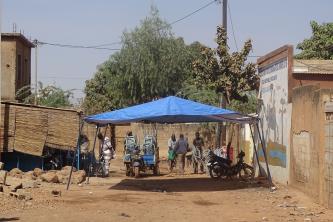
22 May 2017
Most African cities are comprised of segregated, fragmented urban areas, with "unplanned” working-class neighborhoods alongside planned areas. This segregation is also apparent in the design of main urban roads, as designers tend to separate modes of travel (walking, cycling, two-wheeled vehicles, cars, etc.) and favor car use. In reality, however, main roads are used by all types of modes, regardless of the spaces dedicated to them. This modal mixing can also be observed on the lateritic dirt roads in neighborhoods where traffic, in fact, seems more fluid than on the city’s main thoroughfares.
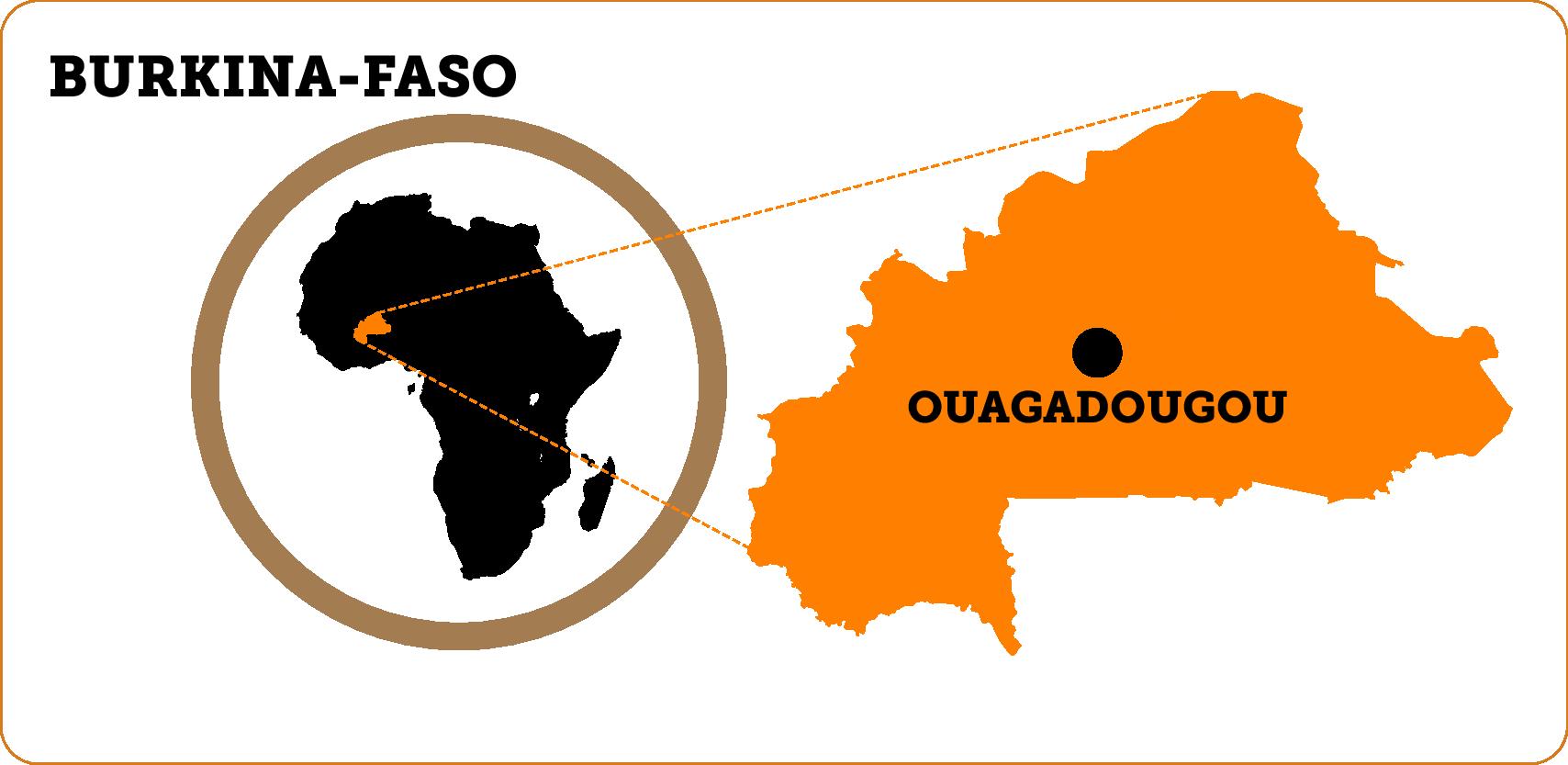
This observation leads us to question the approach of planners responsible for designing public roads. To begin, these designs are not adapted to actual practices (while soft and slow modes are predominant, they are largely ignored in the developing of public space). Moreover, they do not encourage a mobility transition. Why do developers choose infrastructure that favors cars and high speeds in African cities knowing full well they only create more traffic congestion in the medium term, and that slowness and the sharing of spaces are essential to the qualitative development of urban life?
This reality is aptly illustrated in the case of Ouagadougou in Burkina Faso. The sharing of traffic areas and the use of soft modes of on neighborhood roads could be considered as alternatives to high-speed infrastructures, thus allowing for more sustainable mobility.
Ouagadougou is 25 kms in diameter, with an estimated population of 2.5 million. The concentration of public facilities in the city center (Ouagadougou's geographic center) and in Ouaga 2000 (south of the city) produces the commuter travel responsible for the congesting of main urban roads, which are paved.
The city’s traffic is characterized by the high number of two wheeled vehicles, which have earned it the nickname "Ouaga-two-wheeler," despite the growing presence of used vehicles, nicknamed "France-Aurevoir. 1". But what about walking?
Of all the urban road user counts and surveys done on travel conditions in Ouagadougou between 1992 and 2014 2, none provide data on pedestrians, who are not taken into account by investigators (as was also the case in Western countries prior to the 1990s). Yet, the "Ouaga 2009" survey showed that only six out of ten urban dwellers own a vehicle (bike, motorbike or car) in working condition 3. Given the limited development of organized public transportation (buses 4 and taxis), which are used by fewer than one in ten urban residents, it is easy to imagine that, in addition to carpooling and "co-motorbiking" many urban dwellers travel by foot.
Urban developers either ignore or relegate pedestrian facilities to the bottom of the list in the planning and construction of transportation infrastructure. One need only consider Ouagadougou’s three interchanges where, in the minds of the planners and their representation of modernity, cyclists and mopeds were clearly not welcome.
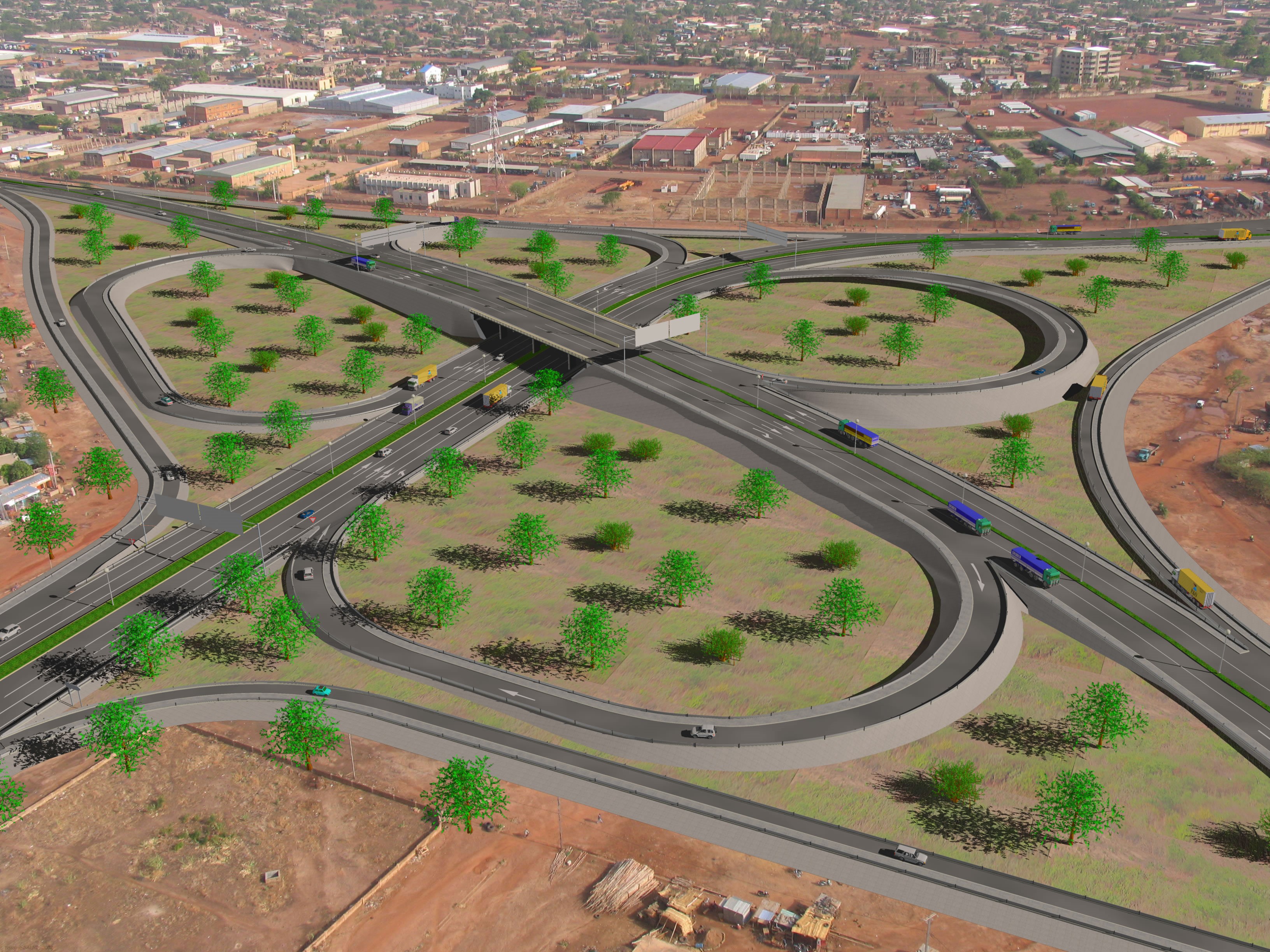
Ouaga 2000 Interchange
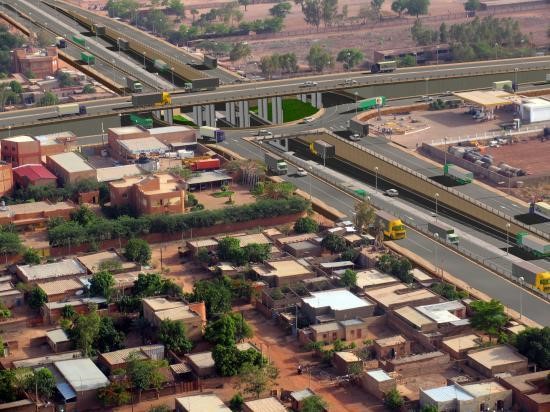
Eastern Interchange
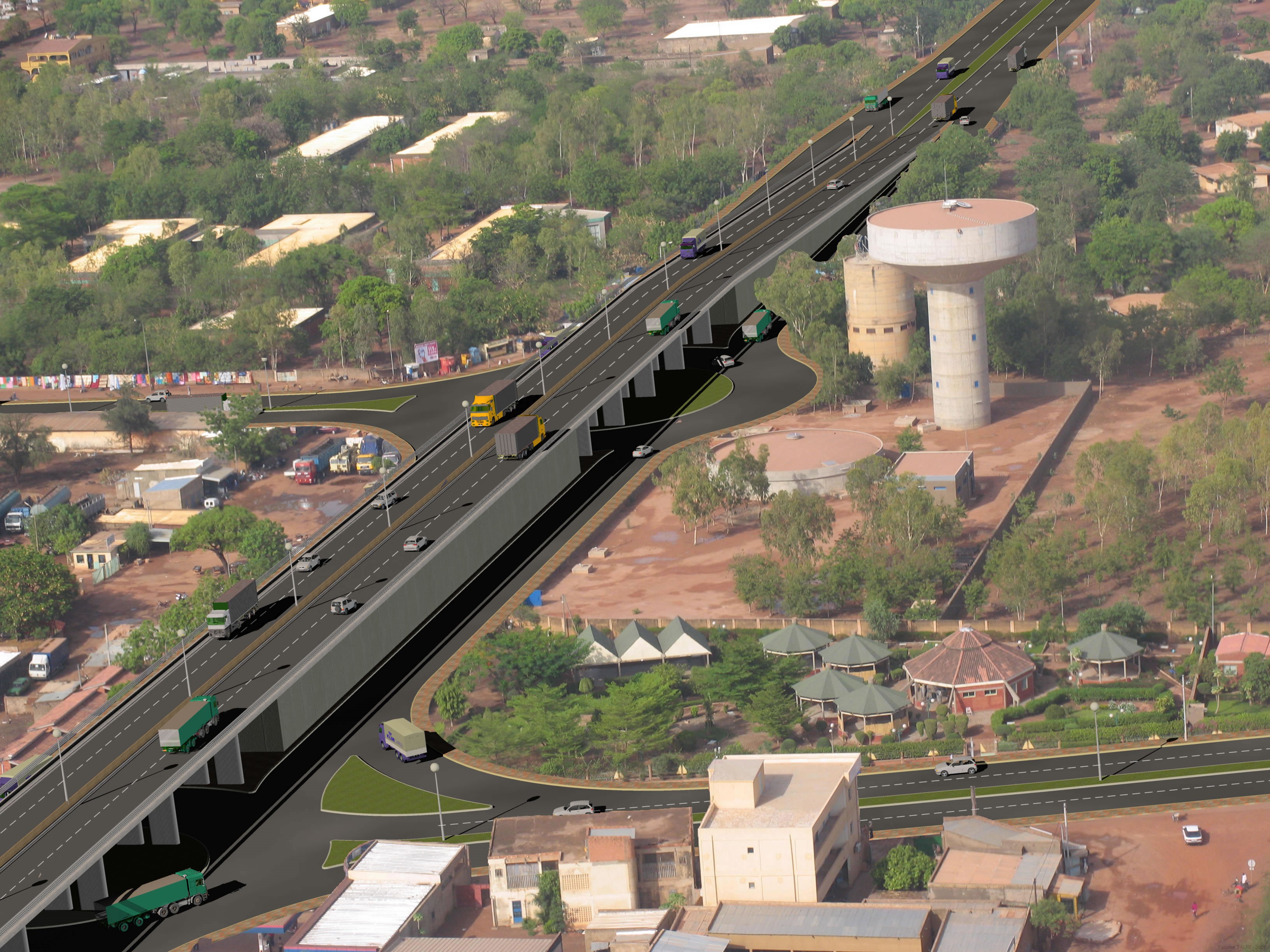
Western Interchange
The counts of urban road users done by the commune of Ouagadougou also reveal that one in five users travels by four wheel vehicle, one by bicycle and the other three by motorcycle. However, the spatial relationship between the various modes, when carried over to road development, is at best one-third for bike paths (where they exist) and two-thirds for motorized vehicles (e.g. Avenue Charles de Gaulle). It is therefore not surprising that most motorcyclists use the lanes reserved for four-wheel vehicles, where they ride faster and more recklessly than the latter, as exemplified by the acrobatic slaloming of motorbikes between cars. Pedestrians and cyclists must also struggle to cross these fast-moving main arteries with no dedicated space to travel along them safely. In 2012, pedestrians were involved in 12% of accidents, mainly along the paved roads that interconnect the neighborhoods, demonstrating that urban roads in Ouagadougou are not adapted to soft modes.
Despite its apparent social diversity - observable in certain neighborhoods - Ouagadougou has "unplanned" shantytowns, which are a sharp contrast to the so-called "modern" areas like Ouaga 2000, considered a “rich neighborhood” by urban residents.
As a general rule, drivers use the paved roadways with segregated traffic patterns. However, it is not uncommon for them to use alternate routes to avoid traffic congestion on the main thoroughfares. This notably includes narrow, winding, sometimes damaged alleys where pedestrians, cyclists and mopeds, patiently also make their way.
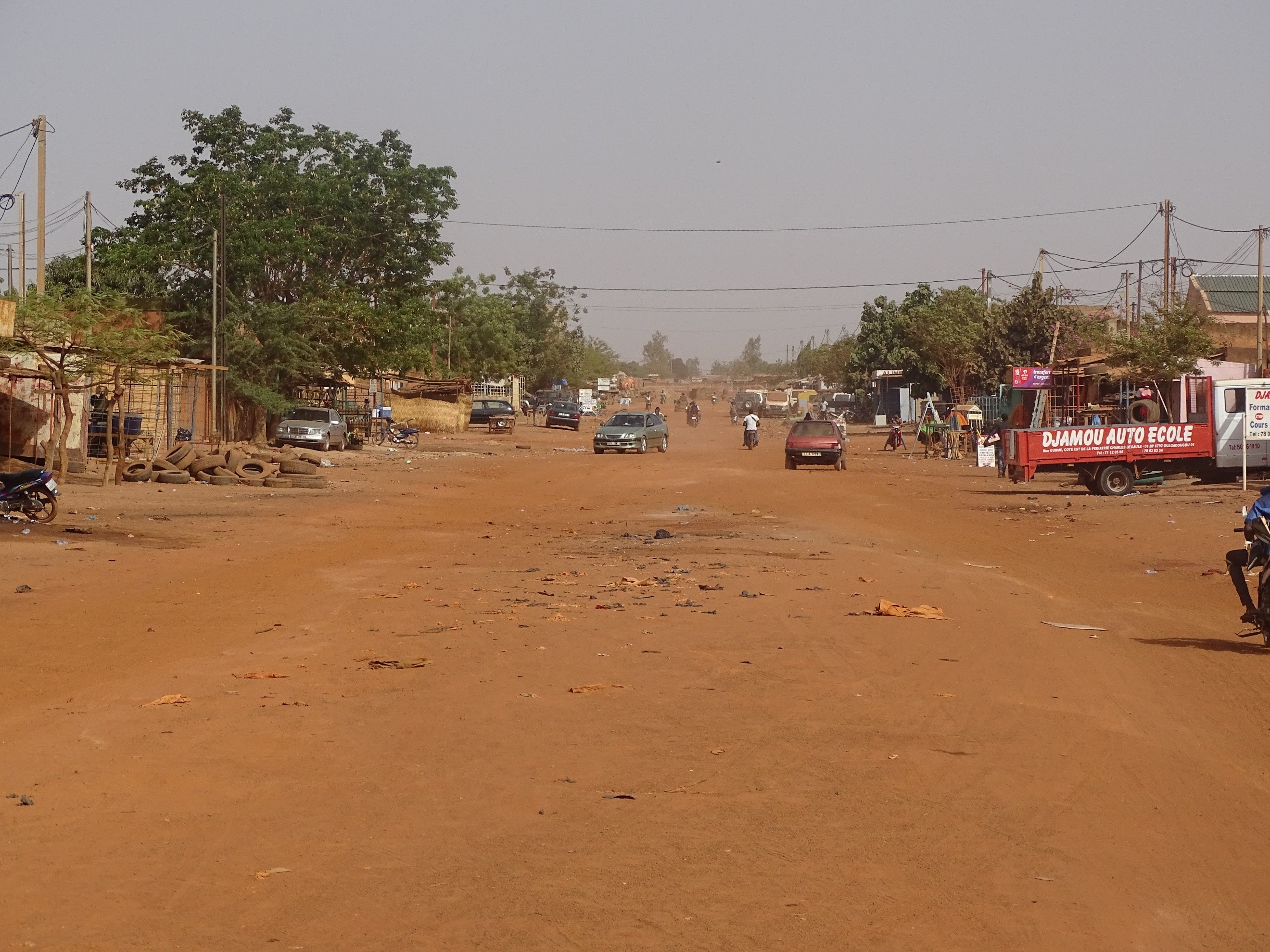
Traffic on an unpaved road in Ouagadougou

Segregated traffic on Avenue Charles de Gaulle
Surprisingly, car travel on unpaved roads with mixed modal uses is sometimes faster than on the segregated main road specifically designed for vehicles.
Due to Ouagadougou’s strong population growth 5, the high price of land and the availability of rental units in the city center, the suburbs, and unplanned areas in particular, are becoming denser. These residential neighborhoods are served by large paved roads, which is not the case of the streets of the neighborhoods. Some drivers, motorcyclists and cyclists choose their route and mode of travel by the "obligation" 6 to get to their place of work (usually in the city center).
In fact, according to geographer Vincent Gouëset’s work on the conditions of urban mobility in Ouagadougou, the great distances quite likely limit travel options in the city. Inhabitants generally prefer travelling on paved roads, though certain slow-speed laterite roads may actually be faster in terms of travel time. Most cyclists and motorcyclists have abandoned these routes to avoid inhaling the red dust and getting dirty. The few paved main arteries and city-center roads are therefore congested.
Similarly, travel by moped is favored over walking for reasons of climatic comfort: the speed produces natural ventilation, so that users can reach their destination less sweaty than if they had walked in the 40°C heat. However, the systematic use of mopeds has led to unreasonable practices. For instance, it is not uncommon to see young people hop on their moped and go 50 feet, when walking would have actually been faster!
Roads in Africa are also used for activities other than travel (e.g. for preparing millet patties or bean fritters, purchasing and selling miscellaneous products, as a recreation area for children playing hop-scotch or "maracana" football, animal crossings, or as pedestrian thoroughfares on Fridays at prayer time or during marriages, baptisms, funerals, etc.).
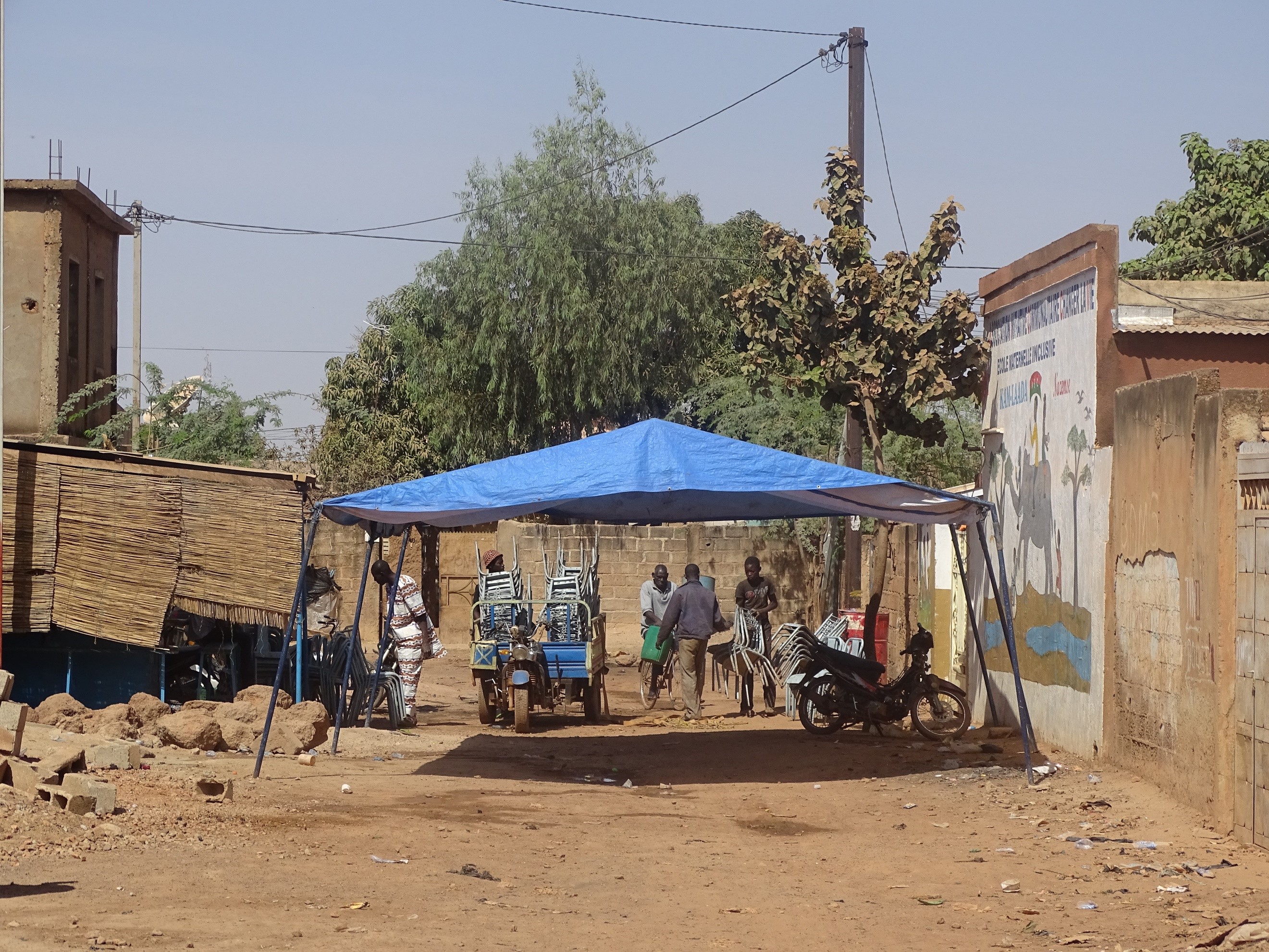
A tent spanning a road
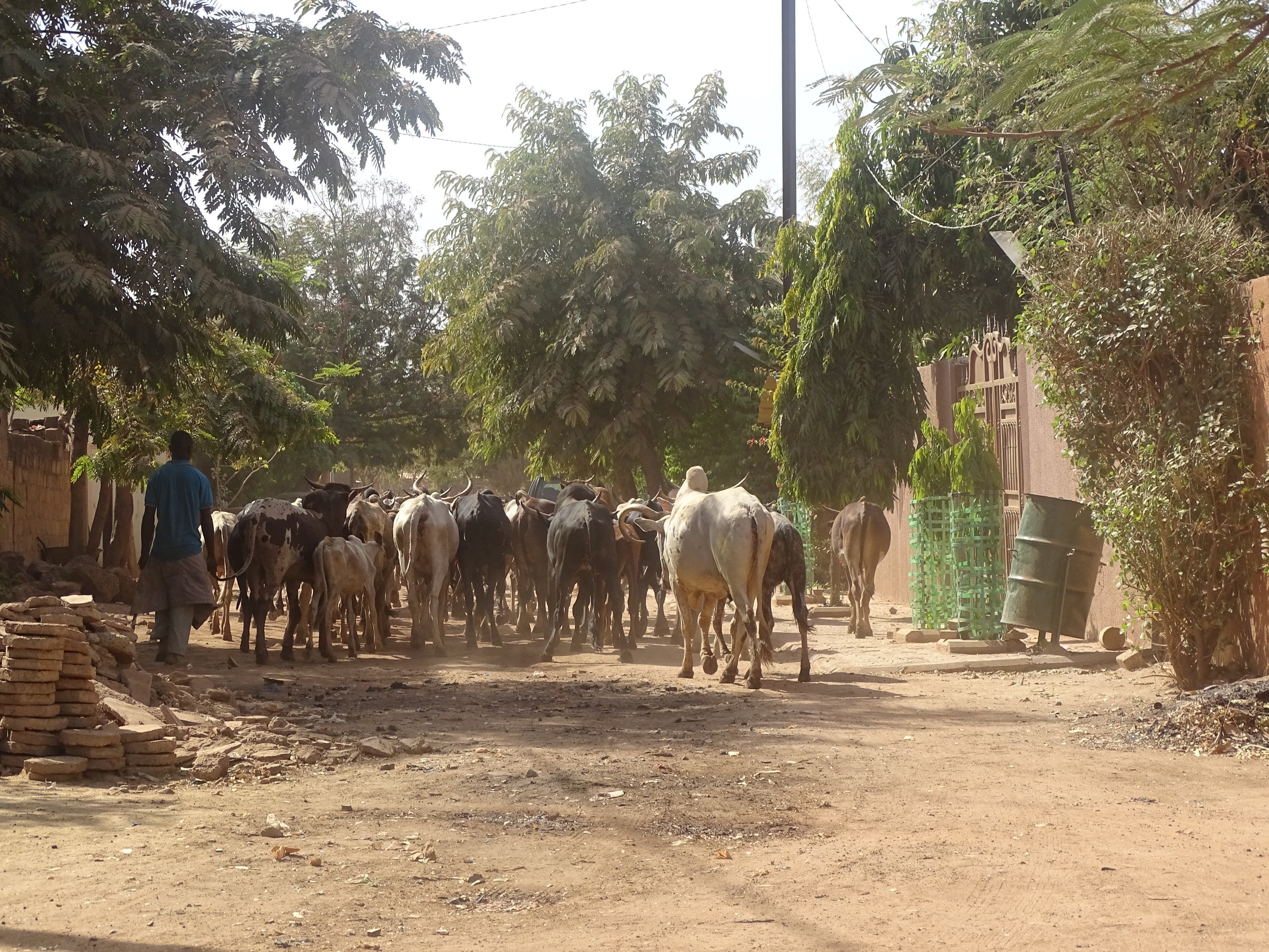
A herd of oxen crossing on a road
This shared use of road space promotes social mixing and cohabitation. Apart from the occasional appropriation of space for business activities, true cultural and religious diversity reigns. The sharing of space also helps ease social tension and urban stress.
How to make it so that these practices on the shared space of urban roads are no longer perceived as constraints to mobility but as opportunities for developing alternative planning? How can we take advantage of these practices to help make Africa, or at least Ouagadougou, part of the mobility and energy transition?
Regarding the organization of urban mobility, building new infrastructures can only make sense if it respects the sociocultural practices of urban dwellers. Shared space planning experiments demonstrate, for instance, that not only do such spaces improve the quality of life in downtown areas by allocating more space for soft mobilities, but they also limit car domination and its negative impacts on the environment. Slowness is gradually finding its place in contemporary debates on the city worldwide, and in particular in Europe. A paradigm shift seems to be taking place: urban planning for speed is giving way to urban planning for slowness.
Developers in African cities could therefore use the contemporary diversity of shared spatial practices to design urban roads that would continue to allow for human interactions and social relationships between users. It was also observed that plantings along roadside encouraged the development of soft mobility. Thus, the various planning options to be reinvented in view of more sustainable mobility would be development initiative, for, as Burkinabé historian Joseph Ki-Zerbo (2012) said, "to develop is to multiply the possibilities of liberating choices." Hence, the need for urban planners in Africa to rethink travel intermodality by reconsidering the (non) sharing of spatial functions (public and private/ current practices and projected uses) to make the cities, neighborhoods, streets and spaces shared by all accessible to all.
1 Secondhand vehicles imported from Europe and America.
2 INRETS, 1992; CIMA, 2000; IRD, 2009 and PAMO, 2014,
3 F. Boyer, D. Delaunay, 2009
4 15 buses were in circulation on the 12 bus lines developed for Ouagadougou’s main road arteries in 2017.
5 The annual population growth rate in Ouagadougou was 7.6% between 1996 and 2006.
6 See V. Gouëset’s work (in F. Boyer D. Delaunay, 2009) on urban development and mobilities in Ouagadougou and Diaz Olvera L., Plat D.’s work (1996) on daily mobility in Ouagadougou.
For the Mobile Lives Forum, mobility is understood as the process of how individuals travel across distances in order to deploy through time and space the activities that make up their lifestyles. These travel practices are embedded in socio-technical systems, produced by transport and communication industries and techniques, and by normative discourses on these practices, with considerable social, environmental and spatial impacts.
En savoir plus x
Southern Diaries by Forum Vies Mobiles are licensed under a Creative Commons Attribution-NonCommercial-ShareAlike 3.0 France License.
Permissions beyond the scope of this license may be available at contact.
Other publications